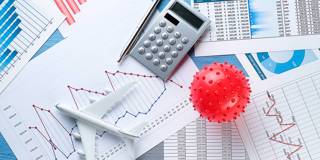Although the COVID-19 pandemic has forced economists to adjust their models and update their assumptions, it has not depleted their arsenals. By absorbing key insights from epidemiology, economics can still offer valuable lessons for how to navigate the current crisis.
LONDON/TURIN/OSLO – COVID-19 has led economists to turn to the models used by epidemiologists as they struggle to understand the dynamics of the pandemic and its likely costs. The original epidemic model, commonly known as SIR, was introduced by William Ogilvy Kermack and Anderson Gray McKendrick almost a century ago. It divides the population into those susceptible to the disease (S), those infected with it (I), and those who have either recovered or died from it (R).

LONDON/TURIN/OSLO – COVID-19 has led economists to turn to the models used by epidemiologists as they struggle to understand the dynamics of the pandemic and its likely costs. The original epidemic model, commonly known as SIR, was introduced by William Ogilvy Kermack and Anderson Gray McKendrick almost a century ago. It divides the population into those susceptible to the disease (S), those infected with it (I), and those who have either recovered or died from it (R).